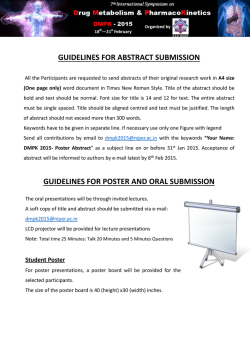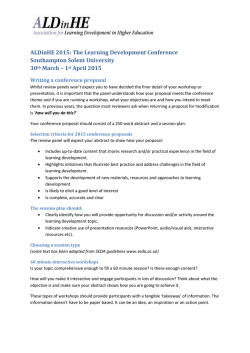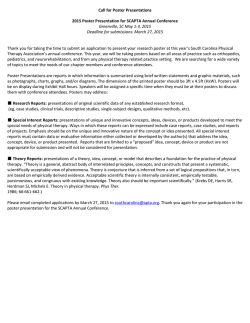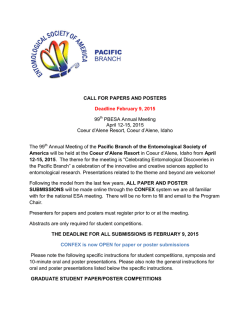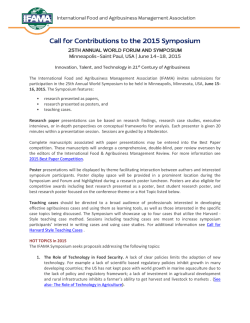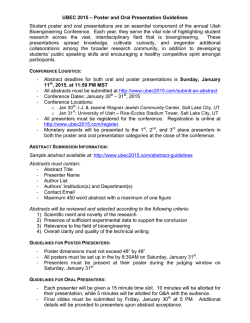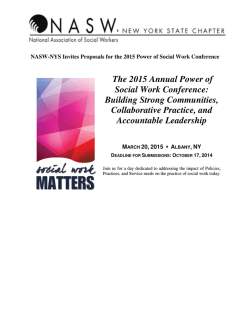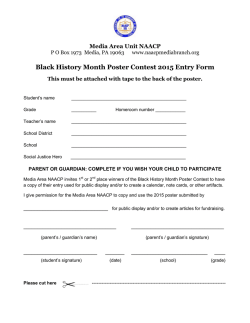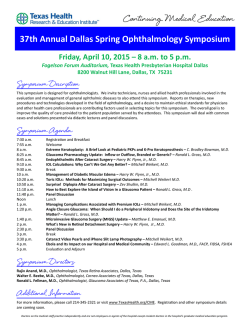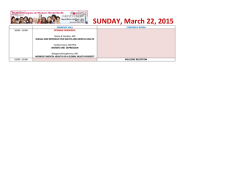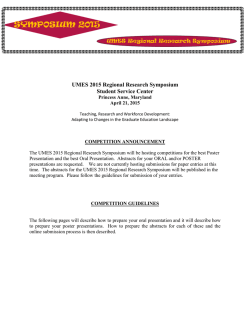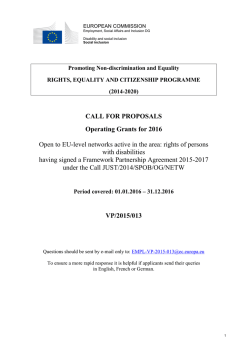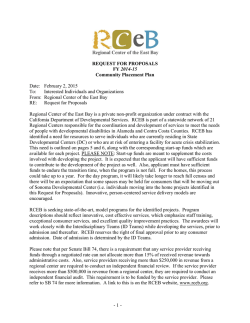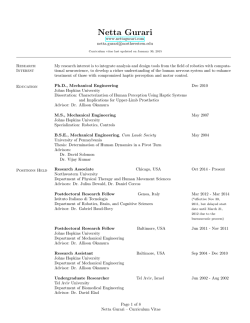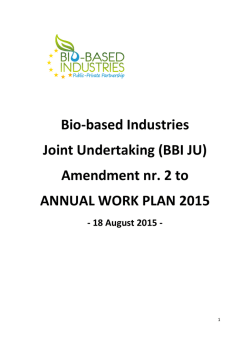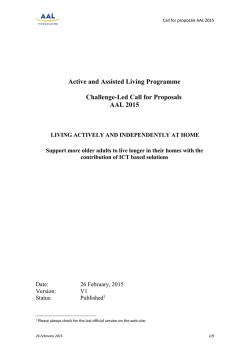
Instructions for Submitting a Proposal
34th Annual Conference Contemporary Influences on Family Relationships: Media, Technology & Other Trends Friday, March 27, 2015 OSU Center for Family Resilience – OSU/Tulsa Review Criteria for Proposals Topic is justified and relevant to the conference theme. Proposal is clearly written and logically organized. Authors proposing to present sessions that involve data collection and analysis should describe the research methods used and the analysis and conclusions of the study. Authors proposing to present papers that are based upon clinical experience or experience as family life educators should integrate their practitioner knowledge base as well as the research base of their proposals. Papers and posters, whether based on data collection and analysis or on practitioner experience, should include the scholarly basis of their work. (A literature review with references.) Papers that are reviews of the literature, theory, and conceptual pieces are welcome. All papers should follow the format of the Publication Manual of the American psychological Association (6th Edition) http://www.apastyle.org/ Instructions for Session Formats Paper Sessions Constitute 3-4 twelve-minute presentations that coalesce around a common idea or theme. Each session has a moderator who introduces each paper and moderates questions/discussion. Poster Detailed displays that summarize completed research/practice or methodologies that include referenced literature, perhaps some diagrams, and attractively fill a 4’ x 8’ poster space. They are generally displayed in close proximity to the exhibits and to refreshments. Authors are expected to be at the poster during specified times to answer questions and distribute hand-outs. Symposia Presentations by a group of three to four individuals on the same topic. Each approaches the topic from different perspectives. Three different arrangements can be use: 1. Panels of several speakers, who make brief introductory remarks, then discuss the topic with each other. 2. Several speakers make presentations on different aspects of the topic, and then receive comments from others presents and audience members. 3. A lead speaker who is followed by comments and questions from discussants and the audience. The symposium concludes with the chair/discussant integrating the presentations as they relate to each other and the topic. When preparing a proposal for a symposium, please include information about each paper/issue presented within the symposium, followed by a summary of the entire symposium. Workshops They are skill-based. Their purpose is to offer opportunities to conference attendees to update their skills or gain new ones. Workshops typically update research skills and provide new ideas for policy and practice. Examples include new applications of statistical analyses, innovative therapeutic approaches, research-practice applications, and educational techniques. Learner objectives must be succinct for continuing education purposes. Round Table Consist of a speaker who facilitates a discussion on a topic/project/program in which those present take part. The speaker begins with a 10 minute introduction, or provides materials that define the issue and background information for use by participants. These are limited to 10 people. After 30 minutes, attendees change table to be able to attend two discussion groups. Common Submission Questions How many proposals may I submit? It is preferred that only one proposal as first author may be submitted. You may be a coauthor on other presentations. When will I know if my proposal has been accepted? You will be notified by February 20, 2015 of the status of your proposal. If my proposal is accepted, what is expected of me? 1. You must register and pay the registration fee postmarked by February 25, 2015. 2. You are committed to attend the conference and make your presentation. 3. If you are presenting you should bring multiple copies of a summary for attendees. The summary should state your objectives and some applications to practice. Steps in Submitting Your Proposal All proposals must be submitted on-line by Jan. 31, 2015 Go to the OKCFR website: www.okcfr.org, click on Conferences, and locate the link to the on-line proposal application form. What to do before you go on-line: Prepare a title for your presentation (not to exceed 100 characters.) Prepare a description of your proposal in a Word file. Your proposal description should not exceed 500 words (not including references). If you are proposing to present over a teaching method, program, clinical practice, etc. please provide some background as well as some examples of implementation. If you are proposing to present over a research study, please include some background/theoretical basis of the study and comment on the study methods, results, and implications. Once on-line you will be asked to provide: Your address/contact information Title of your proposal Co-author/presenter names and contact information Preferred presentation format Presentation length Audio/visual needs Proposal abstract Proposal description Bio-sketch of the primary author/presenter All requested information must be provided for acceptance of the proposal. For any further questions, please contact Dr. Bobby Kern at [email protected] or Dr. Brandon Burr at [email protected].
© Copyright 2025
